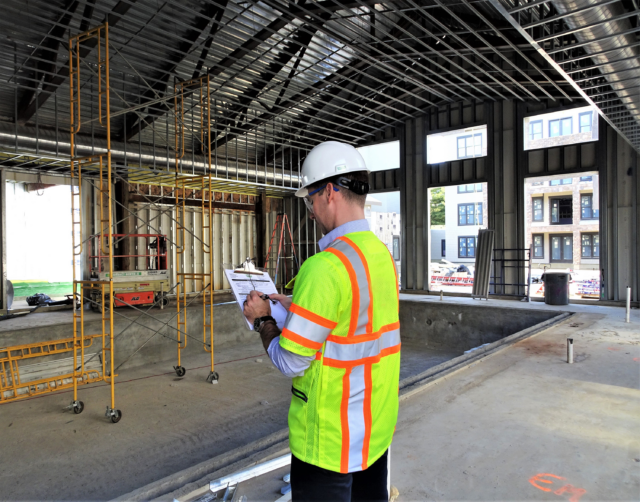Plumbing & Fire Protection Engineering
Service Offerings
Fire Protection Design
Fire Protection Design is fitting reliable, healthy and sustainable suppressants and distribution systems into buildings to “knock down” fires and allow occupants to exit the building, the protection of inventory, equipment and the building itself until the First Responders, or Firefighters, arrive. It involves knowledge of Local and National Codes, which system is the most appropriate for the building fire load(s) to be protected, calculations and in some cases computer analysis of fluid flow and pipe losses.
We have extensive experience in wet pipe system. dry pipe systems, hose standpipes, nitrogen fill, clean agent systems, fire pumps, aerosol systems and the evaluation of fire protection water supplies.
Sanitary Systems and Drainage
Building Plumbing Design helps keeps buildings and their occupants healthy, by conveying wastes to a system that can isolate and treat the effluent. This function is so critical that it used to be regulated by health departments rather than plumbing inspectors. This is because typhoid, dysentery, gastroenteritis, and cholera are just a few of the diseases that can be spread by improperly installed sanitary and drainage systems.
Today, in addition to sending wastewater where it is supposed to go, we are also removing gasoline, oil, grease, acid and other contaminants than cause fires, environmental problems, fatbergs (major clogs) and destroy dialysis drains respectively.
Backflow Prevention
Adding backflow preventers to most commercial buildings is a relatively recent requirement in plumbing design. Generally, they are added when State Health Departments deem the processes and/or chemicals in a building are hazardous enough to merit installation of a mechanical valve(s) in the building to protect the public water supply from the hazard. The rigor of this additional layer of regulatory oversite varies from State to State and from County to County.
Backflow prevention approvals can vary from just another valve the Plumber installs to a stand-alone package containing: a site plan, plumbing drawing(s), and Licensed Engineer’s Report reviewed by the local health department and the water provider. Drawing on our decades of experience, we can help you navigate this often-confusing approval.
Gas Piping
Natural gas piping design normally starts from the gas pressure available “in the street” from the Gas Provider, or utility company and ends at whatever gas fired appliance are needed by the other design team members. Other times larger “campuses” own private, elevated (higher) pressure site distribution systems.
In the latter case we design the actual gas service including the service regulator(s), over pressure prevention device (OPPD), gas meter and valving normally done by the Utility. When natural gas is not available, we can assist by designing propane or fuel oil systems.
Storm Systems
Water is the enemy of buildings. If stormwater is repeatedly misdirected, it can damage plaster walls, wood floors, undermine structural footings, cause exterior ice spalling (surface damage) and cause mold growth.
Only three things are needed to grow mold; mold spores, nutrients and water. Unfortunately, mold spores are all around us in the air and dust is a nutrient to mold. Water the only thing we can control to prevent sick building syndrome due to mold. Let us help you avoid all this with properly designed storm drainage.
Rainwater Collection Systems
Also known as rainwater harvesting, this sustainable technology involves collecting rainwater in an underground tank or in an aboveground skid, pumping it through the appropriate filtration and treatment where it is then used for irrigation or other uses. Certain LEED Credits may be enhanced or obtained with this approach.
Code Compliance Review
Code compliance review starts with determining which codes apply. We start with a “bottoms up” approach. We find and read the local ordinance from the Town or City where your project is located.
In the US, neither a State Code nor the International Plumbing Code applies unless the local ordinance says so. We then look at the “Reference Standards” Chapter of the applicable State Code for the correct national standards such as ASSE 1070 (mixing valves on public handwashing sinks). There are also several a “top down” Federal Codes such the OSHA/ANSI requirement for “tepid” (60 deg F to 100 deg F) water in eyewashes and safety showers.
Last but not least, one Code Enforcement Official in one jurisdiction may interpret a code section differently than another Code Enforcement Official in another jurisdiction. A good code compliance review requires experience and knowledge all of these steps.
























